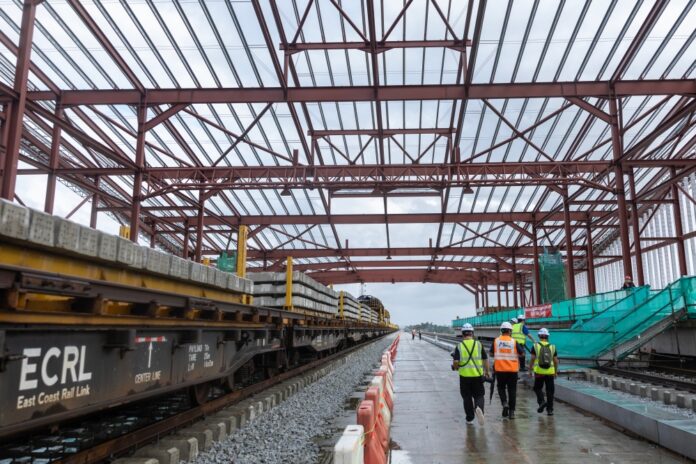BEIJING, April 28 — The completion of the East Coast Rail Link (ECRL) project by the end of 2027 under the Belt and Road Initiative (BRI) is poised to unlock the development potential of Peninsular Malaysia’s east coast, home to the Kuantan Industrial Park, while attracting more Chinese investments.
Belt and Road Initiative Caucus for Asia Pacific (Bricap) president Tan Sri Ong Tee Keat said the project is set to improve the logistical connectivity between the west and east coasts of Peninsular Malaysia.
Phase 1 of the ECRL, running from Kota Baru in Kelantan to the Gombak Integrated Terminal in Selangor, is slated for completion by December 2026, with operations scheduled to begin in January 2027.
Phase 2, which will connect Gombak with Port Klang, is expected to be completed by December 2027, with operations starting in January 2028.
In an interview with Global Times here, Ong said the new phase of high-quality BRI development will give the “Two Countries, Twin Parks” project a renewed boost with the influx of new economic drivers in digital and green transition from China.
“Collaboration on renewable tech with China’s Contemporary Amperex Technology Co. Ltd (CATL) and the location of Huawei’s Asean hub in Malaysia bode well to boost Malaysia in realising its agenda for sustainable development,” he noted.
According to the World Bank, the full implementation of proposed projects under BRI is estimated to increase trade by between 2.8 per cent and 9.7 per cent for economies along the corridors.
Entering into the second decade, Ong, who is also the former transport minister, pointed out that the BRI is heading to a new phase of high-quality development, with priorities on green transition, sustainable digital initiatives, and ‘small yet beautiful’ projects.
BRI is a global infrastructure development adopted by China in 2013 to invest on routes connecting Asia, Europe, Africa, Oceania, and Latin America.
In another development, Ong said the Global South and emerging markets economies are increasingly poised to be alternative engines of global growth amid rising protectionism, accounting for over 50 per cent of global gross domestic product growth.
“These developing nations, including Asean, Brics and African Union members are presently the rare bulwarks of multilateralism left in driving regional integration to counter trade fragmentation,” he emphasised.
Leveraging on digital economy and diversification of supply chains alongside closer South-South cooperation, Ong said the evolving dynamics are set to reshape the world order into a multipolar model.
In particular, he said the China-Asean economic and trade cooperation looks set to scale greater heights this year with the upcoming conclusion of the China-Asean Free Trade Area (Cafta) 3.0.
“Digital economy, green transition, and cross-border e-commerce will be the key initiatives for driving such cooperation,” he said. — Bernama


